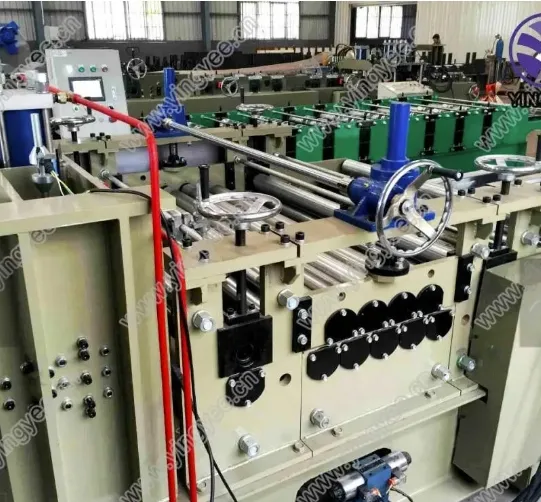
Sheet metal straightening transforms distorted materials into precision-engineered components, serving as the critical bridge between raw material supply and high-tolerance manufacturing. Warped or coiled sheet metal—whether aluminum, steel, or specialty alloys—compromises dimensional stability in automotive panels, aerospace skins, and electronics enclosures. By deploying advanced sheet metal flattening machines, manufacturers eliminate internal stresses, correct deviations as fine as ±0.1mm/m², and achieve near-perfect flatness. This process is not merely corrective; it is foundational to precision in stamping, laser cutting, and assembly, where deviations exceeding 0.5° propagate into costly scrap. The synergy of Sheet metal straightening technology and straightening machine for sheet metal innovation directly drives productivity, slashing scrap rates by 70% while accelerating downstream throughput.

Sheet metal straightening counteracts yield-point elongation and anisotropic deformation—defects inherent in rolled metals. When coiled steel or aluminum undergoes slitting or blanking, residual stresses manifest as edge waves, center buckles, or crossbow distortions. A sheet metal flattening machine applies controlled plastic deformation via staggered rolls or hydraulic presses, inducing compressive/tensile forces to realign grain structures. For example, aerospace-grade aluminum (e.g., 2024-T3) requires strain rates exceeding 10³ s⁻¹ to enhance elongation by 116%, a phenomenon validated in high-speed forming studies 13. Modern straightening machine for sheet metal systems integrate real-time laser scanning to map surface topology, dynamically adjusting roll penetration depths to ±0.01mm. This eliminates flatness errors below 20 I-units (industry flatness metric), enabling consistent dimensional accuracy for downstream processes like CNC machining or adhesive bonding.
Contemporary sheet metal flattening machines blend mechanical force with digital intelligence. Key subsystems include:
For ultra-thin materials (0.1–0.5 mm), tension leveling units add longitudinal stretching to suppress micro-buckles. A straightening machine for sheet metal processing 6mm steel, conversely, exerts 200-ton pressure via carbide-coated rolls, eliminating plastic deformation hysteresis. The result: consistent flatness ≤1.0 I-unit across copper, titanium, or high-strength steels.
Deploying precision sheet metal flattening machines delivers quantifiable gains:
Automotive suppliers using servo-electric straightening machine for sheet metal units report 40% faster stamping line changeovers. For instance, correcting warped EV battery plates pre-laser welding reduces rework by 65% and improves thermal contact uniformity by 90% 2.
Optimizing Sheet metal straightening requires aligning machine capabilities with production demands:
High-volume plants (200+ sets/year) achieve ROI within 12 months. A case study involving 2mm stainless steel enclosures demonstrated 290% productivity gains after upgrading to PLC-controlled sheet metal flattening machines with ±0.05mm repeatability.
Precision rollers apply incremental plastic deformation, exceeding the material’s yield strength to realign dislocated grain structures. For aerospace aluminum (e.g., 2024-T3), high-strain-rate straightening at >10³ s⁻¹ enhances elongation by 116%, ensuring uniform metallurgical properties 1.
Advanced systems maintain flatness within ±0.1 mm/m² and angular deviations ≤0.5° using closed-loop laser feedback. Thickness compensation accuracy reaches ±0.01mm across 2,500mm widths.
Roll levelers deliver continuous, high-speed correction (10–15 m/min) with 70% less energy versus hydraulic systems. Progressive bending also prevents work hardening in critical zones like edges or perforations.
Yes. Servo-adjustable rolls bypass raised features, while tension levelers apply uniform elongation without tearing. Systems process up to 60% open-area perforated sheets with 0.3mm thickness.
Vibration sensors and thermal imaging predict bearing failures 300+ hours pre-failure, while cloud-based analytics optimize roll speeds based on material batch variability, reducing unplanned downtime by 40%.